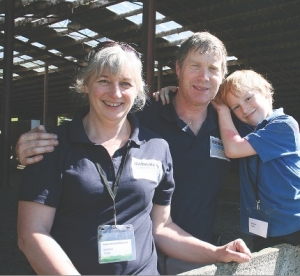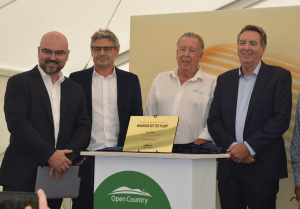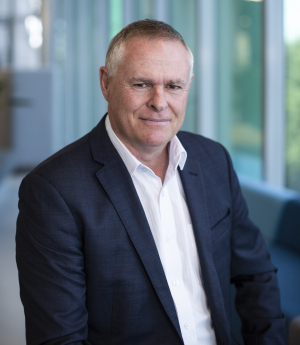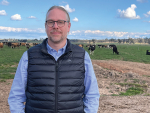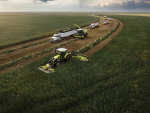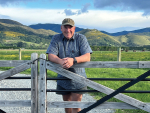The couple have been farming Nithdale Station, in the hills of the Southern Syncline just southeast of Gore, since 1994, initially as managers, then as owners of the farming company running the station for the family trust set up by Andrew’s grandfather, who bought Nithdale in 1924.
It’s traditional sheep and beef country but when the opportunity to buy the land from the trust arose in 2007-8, Andrew and Heather decided to convert a 275ha corner of the 1478ha station to dairy to facilitate that.
“It was a challenge and added complexity, but we saw it as an opportunity and life’s about taking opportunities,” Tripp told a Grassland Association conference field trip on the property earlier this month.
It also fitted with their vision of building a self-contained, profitable, sustainable and diversified business that will endure for future generations.
As the first dairy conversion in the Kaiwera district, it generated a lot of interest, but with dozens of other farms across Southland and Otago making the move to dairy that year, the transition was far from smooth.
However, after a “disastrous” first season, they’ve been reaping the rewards, as revealed by figures presented at the field day by local consultant Graham Butcher.
The station purchase and dairy conversion increased their debt $9.5m, Butcher explained. At 6% interest, an overall increase in earnings before interest and tax (EBIT) of $372/ha was needed to cover that.
Last year’s whole farm EBIT was $1003/ha. Crunching theoretical numbers for the station without the conversion, Butcher worked out it would have been $481/ha without the dairy.
Even this year, with lower payout, lamb and wool prices forecast, EBIT with the conversion looks like coming out ahead, at $879/ha, versus $357/ha without – a difference of $522/ha.
“Congratulations, you’re still coming up on the right side of the ledger, but not by a lot,” said Butcher to the field trip audience.
The conversion has also created $3.6m of equity, he pointed out, and the overall business – dairy, commercial sheep and beef, stud Romney and Suffolk flocks, and a farmstay – is certainly more diverse. “More resilient? Probably,” continued Butcher. “Though sheep and beef is probably more resilient if things got really tough.”
Nithdale still has a big foot in that camp, with nearly 5000 commercial hoggets and ewes, 1500 stud ewes, mostly Romneys, and 131 beef cows. There’s also 50ha of forestry and a farmstay.
The rest of the farm also provides the dairy support, rearing heifers and growing silage and winter crop. All costs are allocated accordingly.
A lower order sharemilker runs the dairy unit. Tripp says introducing that role, with the right person in it, and bringing in specialist consultant Ivan Lines, turned the dairy unit round after a difficult conversion and first season. “I could just about write a book about what not to do,” he admitted to the field trip.
The conversion had been put in the hands of a management company. There were problems with completion of the shed and plant, budget over-runs, and staffing issues. “I think the key thing is to get more involved yourself... and allow yourself plenty of time.”
After producing just 174,500kgMS in 2008-9, production leapt to 317,504kgMS in the second season. Last year saw a slight dip to 349,000kg from 353,000 in 2010-11, due to a tough season.
This year’s target is 360,000kg, which, as Lines explained, is despite trimming nitrogen use from 185kg/ha to 150kg/ha and cutting feed costs by switching silage for concentrate.
Target pasture use is 12tDM/ha, which was achieved the year before last, he notes.
“We’re on track so far and if we do achieve that, with all these inputs, we’ll achieve budget.”





